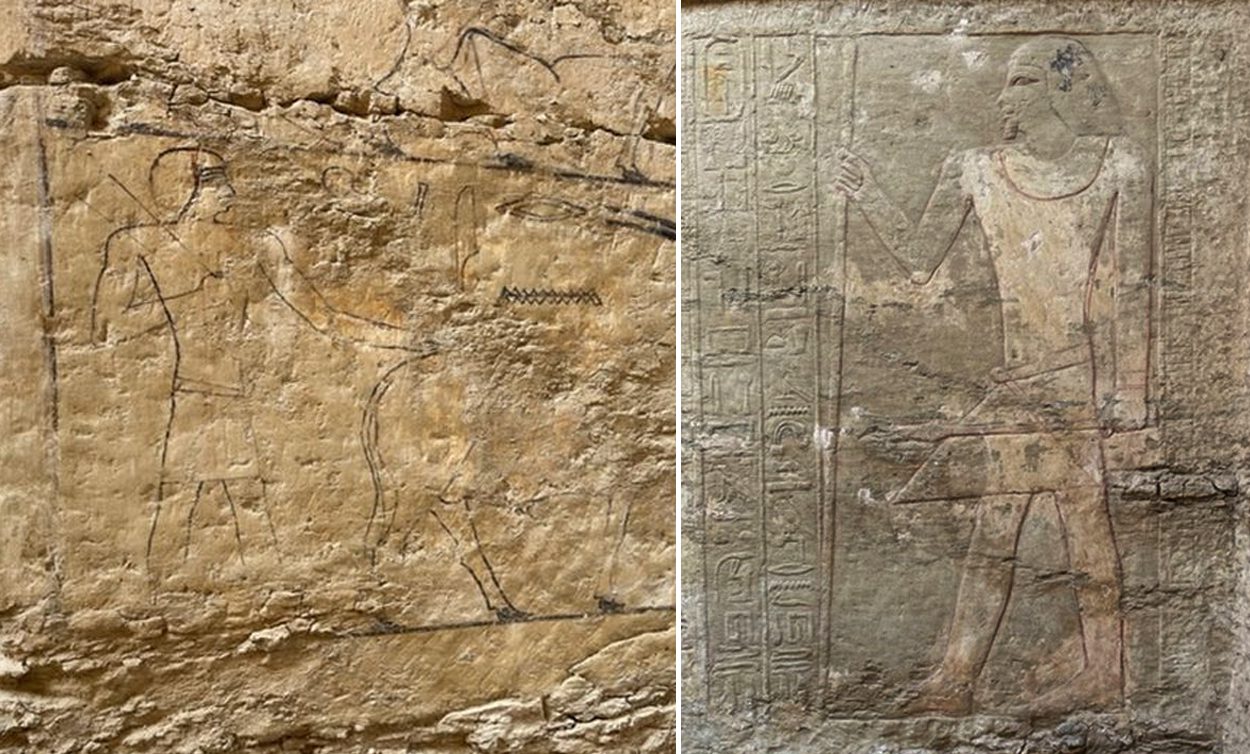Archaeologists from the Polish-Egyptian archaeological mission in Saqqara, Egypt, have discovered a tomb belonging to a royal clerk during the reign of Pharaoh Userkare.
Userkare (also Woserkare, meaning “Powerful is the soul of Ra”) was the second pharaoh of the Sixth Dynasty during the late 24th to early 23rd century BC. It is believed that Userkare rose to power by orchestrating a harem plot with palace bodyguards to murder Pharaoh Teti.
Archaeologists uncovered what they believe is the burial shaft of the tomb whilst excavating a chapel, discovering reliefs that describe Mehcheczi, a royal clerk who was in charge of managing the royal estates.
The reliefs suggest that Mehczeczi was admitted to the secrets of the pharaoh’s archive, assumed to indicate that he had access to documents created at the royal chancellery before they were published. The chapel wasn’t finished by the time Mehczeczi died, with sketches of sacrificial animals: cows, oryxes and ibexes in black ink on lime plaster being visible.
The tomb and chapel is located on the eastern edge of a large rectangular dry moat that surrounds the Step Pyramid burial complex dedicated to Pharaoh Djoser. The moat remained in use for several hundred years after the pharaoh’s reign, but today is almost entirely covered with rubble and sand blown in from the desert.
Kamil O. Kuraszkiewicz from the Faculty of Oriental Studies at the University of Warsaw said: “We have only unveiled the façade of the chapel with the interior waiting for the next excavation season. Mehczeczi was clearly able to hire an efficient team of craftsmen, his chapel is decorated with reliefs of exceptional beauty that reveals an exceptionally skilled hand – elegant lines and subtle modelling comparable with the reliefs of Merefnebef’s tomb (a vizier at the court of Pharaoh Userkare)”.
Excavations have concluded for this season, with the research team planning to explore what remains beneath the chapel and determine whether the tomb has been robbed in the near future.
Header Image Credit : Jarosław Dąbrowski







